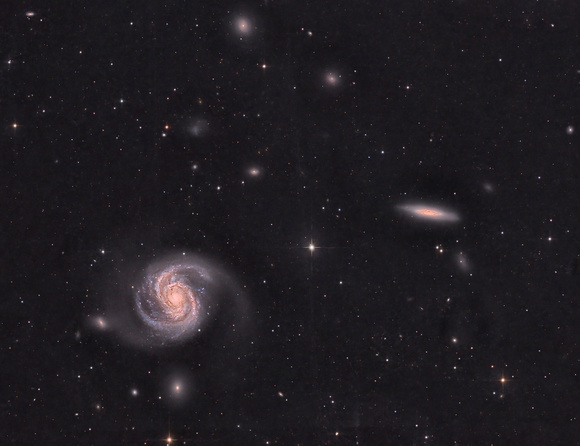M100 and Virgo Cluster Galactic Companions
M100 and Virgo Cluster Companions
M100 et al (Coma Berenices)
Planewave CDK12.5 ; AP 1100GTO AE
ASI6200MM, - Antlia Pro Filters (Ha 3.5nm)
H: (37 x 450s Bin 1, Gain 200)
R,G,B: (38,36,31 x 120s, Bin 1, Gain 100)
L: (50x150s, Bin 1, Gain 100)
Total integration time = 10.2 hrs (Feb 4,12,13; Mar 15,16; 2024)
At 55 million lys away in Coma Berenices, M100 appears to be a classic “Grand Design” spiral galaxy. However, it is somewhat different from other galaxies in that a bright star-like core cannot be seen at its centre. In addition, a strong red Ha signal is noted right into the core indicating new star formation - closer to the core than the vast majority of other spirals where only older yellow stars are found. M100 is indeed considered a starburst galaxies due to the high degree of new star formation taking place throughout the spiral arms and several supernovae have been recorded here since 1900. M100 is about 107,000 lys away and occupies about 7’ of sky.
M100 and its galactic companions, including the edge on the NGC4312 are actually part of the Virgo Cluster, that contains mainly elliptical shaped galaxy with a generally low level of new star creation. The variety of galaxies in this image is interesting, including one that seems to be little more than a wispy cloud of stars.
Imaging was a mixture of cloud and moisture avoidance coupled with light frame rejection with processing. Imaging here in winter can be a huge challenge.


